How many times have you heard that to lose weight you need to exercise? How many of you have promised yourselves that tomorrow, or starting Monday, you are going to get yourself to a gym, and then it just doesn’t happen? Does this mean you’ll never be able to lose weight? No.
In fact, losing weight is way more about what you eat than about how much you’re exercising.
If you know yourself well enough to know that you just aren’t going to start working out, or that changing your diet and your workout at the same time is too much to tackle, then it’s time to focus on the diet. You can look great and lose weight without the gym.
We’re going to break down everything you need to know about losing weight without exercising, so you can achieve your goals without ever stepping foot on a treadmill.
The Truth About Calories
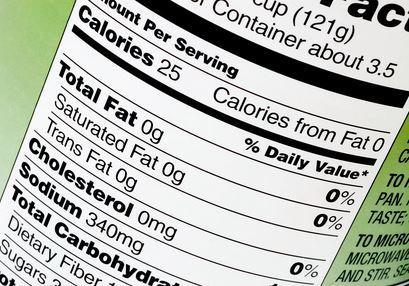
Fun fact: one gallon of gasoline has about 30,000 calories.
In the same way that a car is powered by the energy (the calories) from gasoline, our bodies are powered by the energy (the calories) we get from food and drinks. All body processes, everything from powering your heart and lungs to going for a run, use up energy throughout the day.
But what about when you continually consume more calories than your body is using?
When we consume too many calories, our bodies store that energy for future use. Some of the energy gets stored for quick use in our muscles and liver as glycogen. Our bodies can store, on average, only about 2,000 calories of glycogen at a time
Once the glycogen stores are full, our bodies start to store the remaining excess calories as fat. There are actually two types of fat cells: subcutaneous and visceral. Subcutaneous fat is the fat that is between your skin and your muscles. Visceral fat surrounds your organs. While subcutaneous fat is what makes you look “fat”, visceral fat actually has more long-term health effects. The good news is that dieting can reduce both types of fat stores.
On the opposite end, what happens when you consume too few calories?
When you eat fewer calories every day than you need, your body will start to use up its energy reserves. First it will go through the glycogen stored in your muscles and liver. Then it will start using your fat for energy. Once your body starts using your stored fat for energy, you will start to lose weight.
How to Calculate How Many Calories You Need
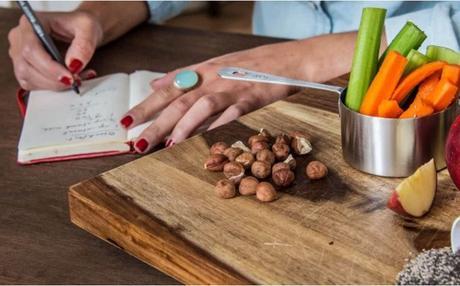
Now that we understand how calories work, the first step to losing weight through dieting alone is to calculate what’s called your resting metabolic rate (RMR, sometimes also called basal metabolic rate, or BMR). Basically, your resting metabolic rate is the amount of calories that your body uses just to keep you alive every day.
The most scientific way to calculate your RMR is by going to an expert who will measure your oxygen and carbon dioxide levels after 12 hours of fasting and 8 hours of sleep to perform a very specific analysis.
Don’t worry, scientists know that isn’t really an option for the average Joe. They’ve developed simple mathematical formulas instead so you can calculate your RMR at home. The formula is called the Mifflin-St Jeor:
Men: 10 x weight (kg) + 6.25 x height (cm) – 5 x age + 5
Women: 10 x weight (kg) + 6.25 x height (cm) – 5 x age – 161
You can enter your information in here to have your RMR calculated for you.
Notice that your RMR is based off of weight, height, and age. Generally, the bigger you are, weight and height, the more calories your body is using. However, as we age, we generally use less.
The last part of the equation is an adjustment for men versus women. Men and women have about a 166 calorie need difference even if they are the exact same size. This is because men typically have more muscle than women, and a pound of muscle burns more calories than a pound of fat.
Now that you know your minimum amount of calories, you need to calculate what’s called your Total Daily Energy Expenditure, or TDEE. Your TDEE is your RMR plus calories used from any activity other than resting, such as walking around the house, digesting food, even typing at your computer!
You can enter in additional information here to figure out your TDEE. Even without any exercise, your TDEE will be a little higher than your RMR. Although you technically only need to calculate TDEE in order to understand how many calories you use each day, knowing your RMR is helpful for understanding how your activity levels, or lack of, impact your daily calorie burn.
How Many Calories to Cut to Lose Weight

When you are trying to lose weight, you need to be eating fewer calories than your body needs each day. This is so our bodies will start to use the energy that was previously stored in our fat cells instead of relying on everything we eat that day.
But how much to cut?
One pound is roughly 3,500 calories. So you would need a 500-calorie deficit for 7 days in order to lose one pound. The National Institute of Health recommends losing no more than 1-2 pounds per week in order to still meet recommended nutritional levels. However, if you’re carrying more than just a few extra pounds, you may be able to raise this number to 1% of your total weight (so if you weigh 300 pounds, aiming to lose 3 pounds a week would still be safe).
In general, 1-2 pounds per week is equivalent to a deficit of 500 to 1,000 calories per day, so subtract either 500 or 1,000 from your TDEE number from above to get your target daily calorie intake.
(Is your target daily intake 1,700 calories? Check out this 1,700 calorie diet for a sample meal plan.)
Warning: Women should have at least 1,200 calories a day and men should have at least 1,800. Consistently dropping below these levels can result in malnutrition, fatigue, nausea, dizziness, gallstones, and a decreased metabolism.
Many crash diets, or diets claiming to lose 10 pounds in one week, will have you eating fewer than those minimum calorie recommendations. While this will result in weight loss, they are almost impossible to stick to and can have a lot of the nasty side effects listed above
Slower, but steadier and healthier diet changes are the way to go!
Planning/Tracking Calories
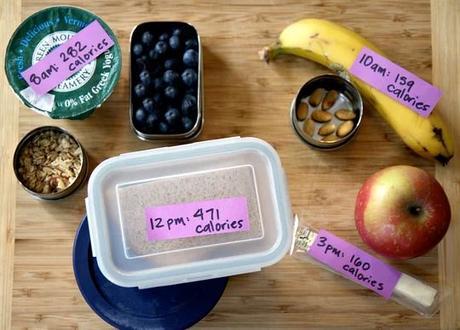
While studies have not been able to prove that eating smaller amounts, more frequently has directly aided weight loss, many people find this schedule easier to maintain. The snacks help ensure that your energy levels and your metabolism stay up, and that you don’t ever get too hungry before a meal, causing you to potentially overeat.
Healthy snacking can also help stabilize your blood sugar levels. While you may think that only people with diabetes need to worry about their blood sugar levels, dieters should understand blood sugar too. When you eat healthy, balanced snacks and meals, your blood sugar levels stay even throughout the day, which helps control hunger and provide consistent energy. Blood sugar spikes, on the other hand, occur when you eat too much unhealthy food, and they have been linked to multiple negative health effects.
While you will lose weight no matter when you eat, as long as you are consuming fewer calories than you’re using each day, recent research has shown that eating most of your calories earlier in the day works better for weight loss (as opposed to eating most of your calories at dinner).
The study, conducted by researchers at San Raffaele Rome Open University, had two groups of 18 women eat identical, reduced-calorie diets for three months. The only difference was one group ate 70 percent of their daily calories at breakfast, mid-morning snack, and lunch versus the other group that only consumed 55 percent of their daily calories during that time.
While both groups lost weight, the researchers found that the group that ate more of their calories earlier in the day lost on average 3.75 pounds more than the other group and trimmed 33% more inches from their waistlines.
While it’s not entirely clear why eating earlier in the day works better for weight loss, it may be because eating more earlier in the day jumpstarts your metabolism, causing your body to naturally use more calories throughout the day.
Due to this study, a recommended breakdown of calories could be:
- Breakfast: 25%
- Mid-morning snack: 10%
- Lunch: 35%
- Mid-afternoon snack: 10%
- Dinner: 20%
Remember, these are rough numbers. Do what works best for you and what you can stick to. Overall calorie intake is still more important than time of day for losing weight.
What Types of Foods to Eat
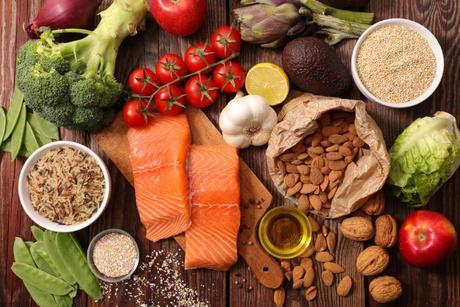
While it’s possible to lose weight eating only junk food, as long as you have a calorie deficit, it is not recommended. A diet full of junk food will eventually slow down your metabolism and can result in dangerous malnutrition and lack of essential vitamins and minerals. You’ll likely also be frequently hungry, which will make it much harder to stick to the reduced calorie levels. Not all calories are created equal.
Let’s look at the basic building blocks of food: carbohydrates, proteins, and fats.
- Carbohydrates: Carbohydrates contain 4 calories per gram. They are sugars and starches that provide energy to the body and brain.
- Proteins: Proteins contain 4 calories per gram. Proteins are made up of amino acids, which are necessary for new cell creation and cell repair. They are the building blocks of our bodies, and every cell contains protein.
- Fats: Fats contain 9 calories per gram. They are the most calorie-dense food, but they also help give us energy and help our bodies absorb other vitamins and nutrients.
- Carbohydrates, proteins, and fats are all essential to a well-rounded, nutritious diet.
Carbohydrates
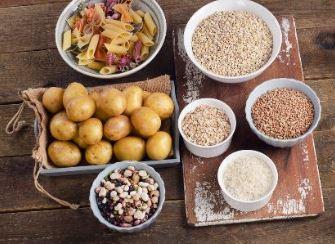
Fruits and vegetables are also technically carbohydrates. They are great foods to fill up on while dieting, since they are high in fiber and low in calories. Foods that are high in fiber help you feel fuller, longer, which can help you stick to a reduced-calorie diet. Colorful fruits and vegetables also contain essential vitamins and minerals that help you reach your optimal nutrition.
Great carbs to eat while trying to lose weight:
- Broccoli
- Spinach
- Carrots
- Bell peppers
- Apples
- Berries
- Whole wheat pasta
- Black beans
- Oatmeal
Protein
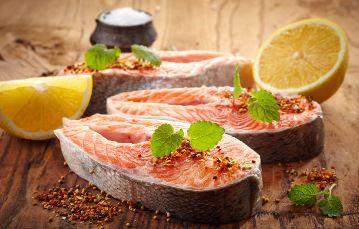
Proteins are made up of amino acids. Our bodies use amino acids to create the three dimensional structures, like muscles and bones, that we’re made of. Some of these, called essential amino acids, are only found in food sources. Since our bodies cannot make these essential amino acids themselves, it’s important to get enough protein in our diet. Protein also takes a long time and a lot of energy to digest compared to fats and carbohydrates, which is why they help keep us so full.
Healthy sources of protein:
- Skinless chicken breasts
- Salmon
- Cod
- Lean beef
- Lean ground turkey
- Tofu
- Eggs
Fats
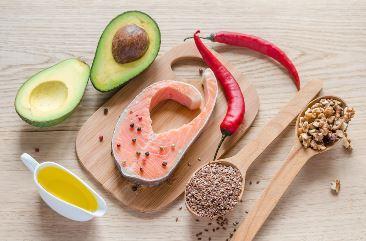
- Monounsaturated: While fats have gotten a bad rap over the years, monounsaturated fats are actually really good for you. They help lower bad cholesterol levels, which can reduce your risk of heart disease.
- Polyunsaturated: Polyunsaturated fats are also good for you. In addition to helping lower bad cholesterol levels, just like monounsaturated fats, they also contribute omega-3 and omega-6 fatty acids. These are essential fatty acids that our bodies can’t produce on their own.
- Saturated: Saturated fats should be eaten in moderation, as excess saturated fat can lead to increased cholesterol levels. The current American Heart Association recommendation is no more than 5-6% of your daily calories from saturated fat. Some sources of saturated fats are beef, butter, and cheese.
- Trans fats: Trans fats are the worst of the four. While some foods may have slight traces of naturally-occurring trans fats, trans fats are usually artificially made in processed foods. Many processed foods and fast food companies use trans fats because they are easy and cheap to use, taste good, and last for a long time. Trans fats, however, have now been shown to raise your bad cholesterol and lower your good cholesterol. You can look for trans fats on food labels as “partially hydrogenated oils”, but the easiest way to keep trans fats out of your diet is to stop eating junk food and fast food.
Good sources of healthy fats:
- Olive oil
- Salmon
- Walnuts
- Avocado
- Sunflower seeds
- Canola oil
- Flax-seed
Expert Tip: If you follow nothing else, a key type of food to avoid is junk food. Junk food is defined as foods high in fat or sugar with little to no protein, fiber, vitamins, or minerals. It’s often packaged and processed. While it can be cheap, convenient, and tasty, junk food has been linked to weight gain and obesity. (Having trouble cutting junk food? Check out this 4 week challenge here.)
Does Protein/Fat/Carb Ratio Matter?
Okay, so you’re going to start loading up on chicken and fish, fresh fruits and veggies, with some quinoa or brown rice on the side. But is there an optimal amount of each to eat?
At the most basic level, every meal and snack should contain at least some carbs, fats, and protein. Having all three will help keep you full and help you absorb all of the nutrients. So instead of just an apple, try an apple with a tablespoon of peanut butter. But some research suggests that you can optimize the exact ratio for peak weight loss and health benefits.
The most general ratio promoted is that 45-65% of your calories should come from carbs (including fruits and vegetables), 10-35% from protein, and the rest from fat. Recent research, however, shows that decreasing the percentage from carbohydrates can aid in weight loss. You may want to try decreasing it to 40% from carbohydrates, 35% from protein, and 25% from fat.
Another way to approach the amount of carbs that you eat is in grams. Eating 50-100 grams of carbohydrates a day has been called the “sweet spot for effortless weight loss”. Here are some examples of healthy carbohydrates and the number of carbs in each:
- One cup of spinach: 1.1 grams
- One medium apple: 25 grams
- One cup of brown rice: 45 grams
As you can see, eating mostly fruits and vegetables for your carbohydrates is the key to staying in the 50-100 grams range. However, this amount of carbs is likely way below 40% of your daily calories, and is not recommended for long-term diets.
Unless you are going for a truly low-carb approach, like the 50-100 grams above, a good rule of thumb is to try and have a balanced diet of all three components, while eating the healthy options from all three food types.
Popular Diets
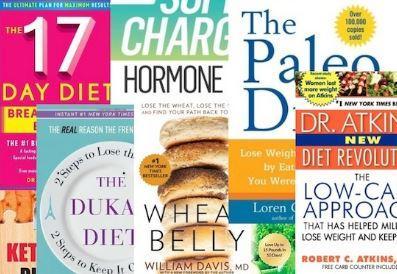
While some people do really well at following general guidelines, some people need a kick-start with stricter guidelines, meal plans, or even boxed meals (like Jenny Craig). If this is you, check out this list of the best diets for healthy eating, approved by U.S. News & World Report:
- Weight Watchers
- Mediterranean Diet
- DASH Diet
- TLC Diet
- MIND Diet
- Mayo Clinic Diet
- Volumetrics Diet
- The Fertility Diet
- Jenny Craig
- Flexitarian
- Ornish
If you already had a specific diet in mind that you were thinking of trying out, check out this site from WebMD that gives you the all the facts on popular diet plans before you decide if it’s right for you.
Just remember, any diet that excludes any food group entirely is usually not recommended to be followed forever. All food groups contain important nutrients that help us be healthy, and eating a variety of foods allow us to get all of those nutrients that we need.
Get Moving!

Okay, okay. This post promises to help you lose weight without exercise. But a post about losing weight needs to at least mention exercise.
Here’s what you need to know: you may not want to add exercise in right now, but challenge yourself to try and be a bit more active than you are right now. Taking the stairs, standing up while on the phone, and playing outside with your dog will all help increase your TDEE, which means you’ll either lose weight faster, or be able to eat a little more and still lose weight – both great things!
So Can You Really Lose Weight Without Exercise?
Yes.
Whether you want to lose 100 pounds, 50 pounds, or 15 pounds, you can do it through diet alone. You don’t need to buy a gym membership or bore yourself on the treadmill day after day.
By eating the right amount of calories of the right foods, you can quickly and easily lose weight and get healthier.
Now use these action items to start losing weight, no exercise needed:
- It’s all about the calories
- Calculate how many calories you need each day by entering your age, weight, height, gender, and basic activity level here, called your Total Daily Energy Expenditure (TDEE)
- Cut 500 to 1,000 calories a day from your TDEE calorie count
- Aim to eat 70% of your daily calories by lunch to maximize weight loss
- Reduce your overall carbohydrate intake to no more than 50% of your daily calories, plus limiting yourself to 50-100 grams of carbs a day, including fruits and veggies, may be the sweet spot for weight loss
- Avoid fad diets, especially those that eliminate entire food groups
- Move around more! Even if it’s just standing up while you chat with a friend on the phone, every little bit counts.
